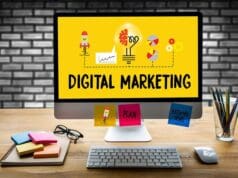Creating engaging 2D animation for advertising can be a daunting task. It requires a great deal of technical skill and creativity to craft visuals that capture the attention of potential customers. If you want to learn how to create stunning 2D animation for advertising, this blog post will provide some helpful tips and tricks to get started. From choosing the right software to developing a storyline, we’ll cover all the basics to get you up and running with 2D animation.
Determine the Objectives of Your Animation
Before creating your 2d animation for advertising, it’s important to determine what objectives you want to achieve. What message do you want to communicate? Is it your goal to increase brand awareness, drive conversions or educate your target audience about a product or service? Knowing what you want to accomplish will help you create an effective and compelling animation. Consider your target audience and craft a storyboard that best conveys your message. Once you know the objectives of your animation, you can move on to the next step.
Identify Your Target Audience
When creating an effective 2D animation for advertising, one of the most important steps is identifying your target audience. Knowing who you are speaking to will help you craft the right message, visuals, and overall story.
Before making your animation, consider who you’re trying to reach. Consider your ideal customer’s age range, interests, hobbies, occupation, and income level. This information can help you determine the type of language and visuals that will resonate with them.
You can also look at demographic data related to your product or service. For example, if you’re targeting a younger demographic, you may want to include upbeat music and colorful visuals. Or, if you’re targeting an older demographic, you might opt for more sophisticated visuals and a soothing soundscape.
Once you better understand your target audience, you can begin to craft a message that speaks directly to them. With an effective 2D animation, you can quickly and easily reach your ideal customers and make an impact.
Write a Compelling Script
Creating a compelling script is essential when creating 2D animation for advertising. You need to think carefully about the story you want to tell. A good script will include the purpose of your ad, provide engaging dialogue, and be memorable. The script should be easy to follow and have a clear beginning, middle, and end.
When writing your script, consider your target audience and the message you’re trying to communicate. Additionally, remember that the visuals of your 2D animation will also be an important factor in your advertisement’s effectiveness. Consider how the visuals can supplement or even enhance your script’s dialogue.
Finally, make sure to double-check your script for any spelling or grammar mistakes. Proofreading is important for making sure that your ad is professional and polished.
By crafting a compelling script for your 2D animation, you can ensure that it has maximum impact and engages viewers from start to finish.
Choose the Right Music

When creating a 2D animation for advertising, it’s important to choose the right music that fits the mood and message of your commercial. Music can be a powerful tool to help evoke emotion and create an engaging experience for viewers. The type of music you select should be based on the audience you are trying to reach, as well as the tone of your commercial.
For example, if your 2D animation targets a younger demographic, upbeat music may be more appropriate than slow-tempo music. Similarly, if your commercial is designed to elicit a sense of excitement, you’ll want to choose upbeat and energizing music. On the other hand, if your commercial is meant to be calming or soothing, then slower-paced music might be more suitable.
It’s also important to consider the length of your commercial when choosing music. Longer commercials require music with enough energy to keep viewers engaged throughout the animation. Shorter commercials may require less intense music to get the message across quickly.
In addition, make sure to research copyright laws and regulations before using any music in your 2D animation. This will ensure that you are not infringing on any copyrights and you are using the music legally.
By carefully selecting the right music for your 2D animation, you can create an engaging experience for viewers and help them connect with your message. Remember these tips and find the soundtrack that will best suit your commercial.
Find the Right Voice Over Artist


When creating effective 2D animation for advertising, finding the right voice-over artist can make all the difference. A talented voice-over artist can help bring your animation to life, adding depth and personality to your characters. The voice of your animation is a crucial element, as it conveys the ad’s message and helps the audience relate to it.
The best way to find the right voice-over artist for your 2D animation is to research different options. Look at demo reels or samples to hear how they deliver lines. You want someone with a good, clear voice that can evoke emotion and capture the feeling of your animation. Also, consider if the artist has a background in animation or a similar media type.
Choosing an artist who is comfortable with your script is also important. Your voice-over artist should be able to adapt their delivery to the tone and style of your 2D animation. Ask them to do a test read before hiring them to ensure they understand what you’re looking for. Finally, ensure you clearly understand the artist’s fees and timeline before you begin working with them.
Finding the right voice-over artist for your 2D animation can take some time, but it will be worth it in the end. With the perfect voice, you’ll be able to capture the attention of your target audience and create an effective ad that resonates with viewers.
Use Professional Tools
When creating a 2D animation for advertising, it is important to use professional tools. These tools will help you achieve the desired quality of your animation. Many software packages are available for 2D animation, such as Adobe After Effects, Toon Boom Harmony, and Flash Professional. Each of these programs has its own unique features and capabilities.
Adobe After Effects is a popular tool for creating 2D animations because it has many powerful tools, including 3D effects, motion tracking, and color correction. Toon Boom Harmony is another great choice for 2D animation because of its intuitive user interface and strong drawing capabilities. Finally, Flash Professional is a comprehensive program that offers a wide range of animation tools and features.
When creating your 2D animation, it is important to understand how each tool works and what features are available. Depending on your project, you may find one program more suitable than another. Additionally, ensure you have the right hardware to ensure smooth rendering and playback. With the right tools, you can create an engaging and eye-catching 2D animation that will help to promote your message.
Test and Measure the Results
Once your 2D animation is completed, it’s time to test and measure the results. To do this, you need to determine what metrics you will use to gauge the success of the animation. You can measure engagement rates, click-through rates, and other metrics to determine how effective your 2D animation was in reaching your desired audience.
You can also use qualitative methods, such as surveys and focus groups, to get feedback from your viewers. This will help you understand how people reacted to your 2D animation and what elements were successful or unsuccessful. This can be used to make changes to your animation in the future.
Overall, measuring the results of your 2D animation can help you identify what works and what doesn’t. With this data, you can make changes and improve future campaigns’ outcomes.
Featured Photo by Mikael Blomkvist: https://www.pexels.com/




